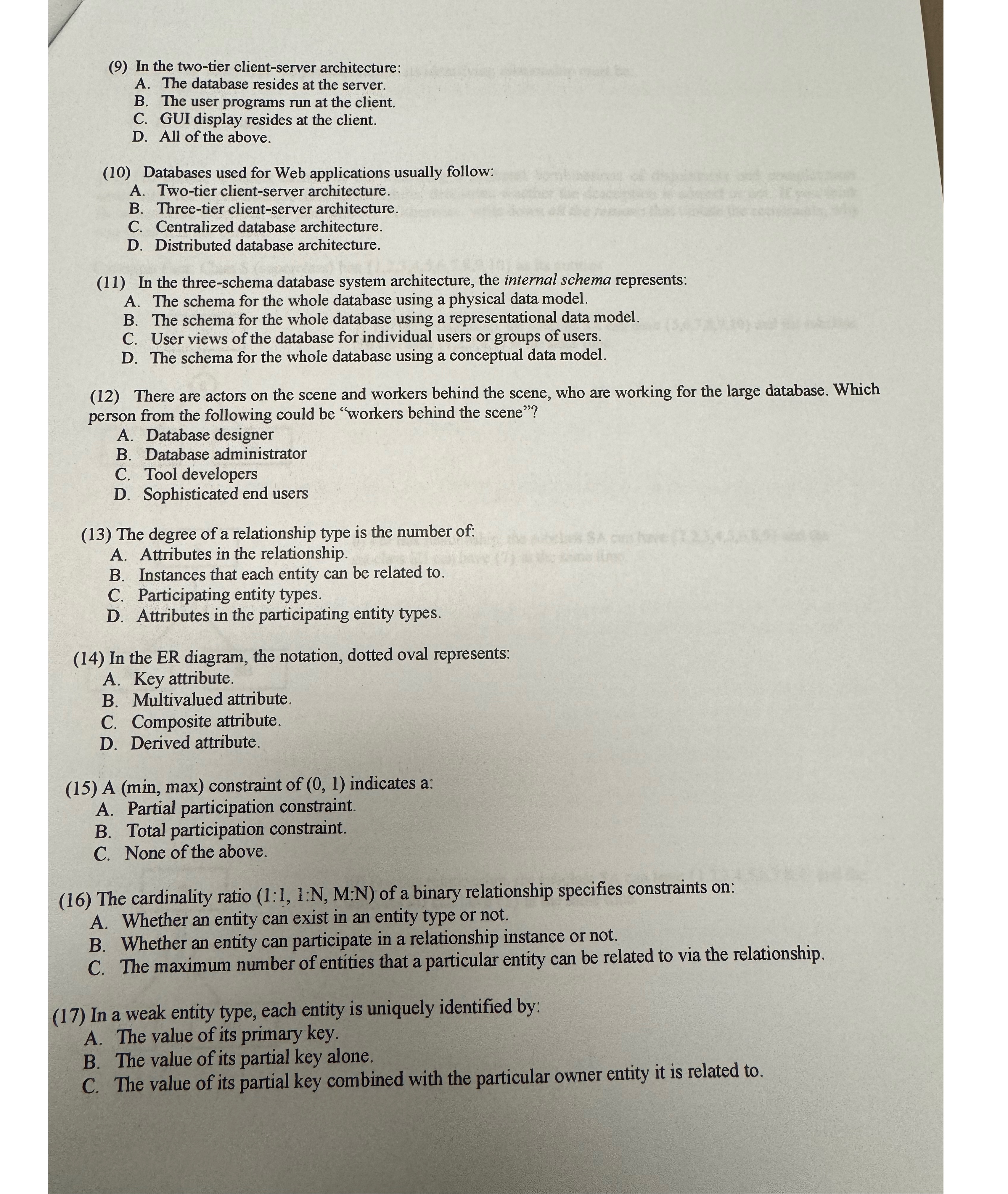Answered step by step
Verified Expert Solution
Question
1 Approved Answer
( 9 ) In the two - tier client - server architecture: A . The database resides at the server. B . The user programs
In the twotier clientserver architecture:
A The database resides at the server.
B The user programs run at the client.
C GUI display resides at the client.
D All of the above.
Databases used for Web applications usually follow:
A Twotier clientserver architecture.
B Threetier clientserver architecture.
C Centralized database architecture.
D Distributed database architecture.
In the threeschema database system architecture, the internal schema represents:
A The schema for the whole database using a physical data model.
B The schema for the whole database using a representational data model.
C User views of the database for individual users or groups of users.
D The schema for the whole database using a conceptual data model.
There are actors on the scene and workers behind the scene, who are working for the large database. Which person from the following could be "workers behind the scene"?
A Database designer
B Database administrator
C Tool developers
D Sophisticated end users
The degree of a relationship type is the number of:
A Attributes in the relationship.
B Instances that each entity can be related to
C Participating entity types.
D Attributes in the participating entity types.
In the ER diagram, the notation, dotted oval represents:
A Key attribute.
B Multivalued attribute.
C Composite attribute.
D Derived attribute.
A min,max constraint of indicates a:
A Partial participation constraint.
B Total participation constraint.
C None of the above.
The cardinality ratio ::: of a binary relationship specifies constraints on:
A Whether an entity can exist in an entity type or not.
B Whether an entity can participate in a relationship instance or not.
C The maximum number of entities that a particular entity can be related to via the relationship.
In a weak entity type, each entity is uniquely identified by:
A The value of its primary key.
B The value of its partial key alone.
C The value of its partial key combined with the particular owner entity it is related to

Step by Step Solution
There are 3 Steps involved in it
Step: 1

Get Instant Access to Expert-Tailored Solutions
See step-by-step solutions with expert insights and AI powered tools for academic success
Step: 2

Step: 3

Ace Your Homework with AI
Get the answers you need in no time with our AI-driven, step-by-step assistance
Get Started


